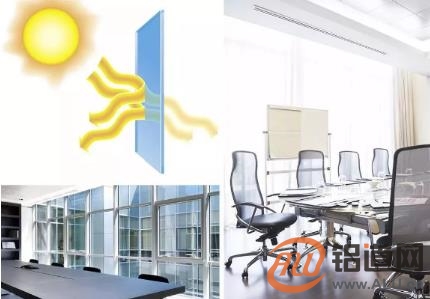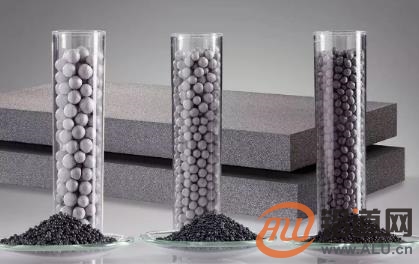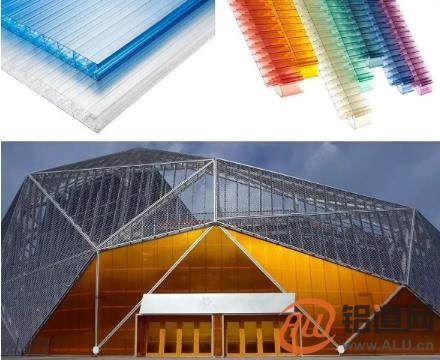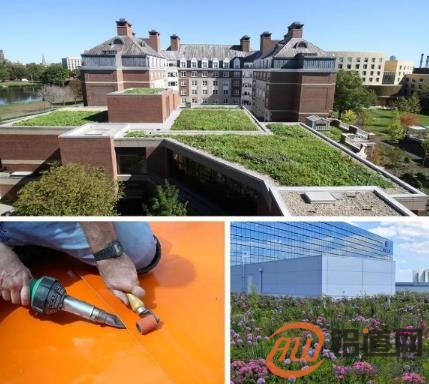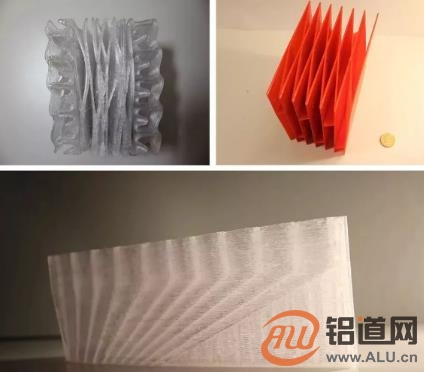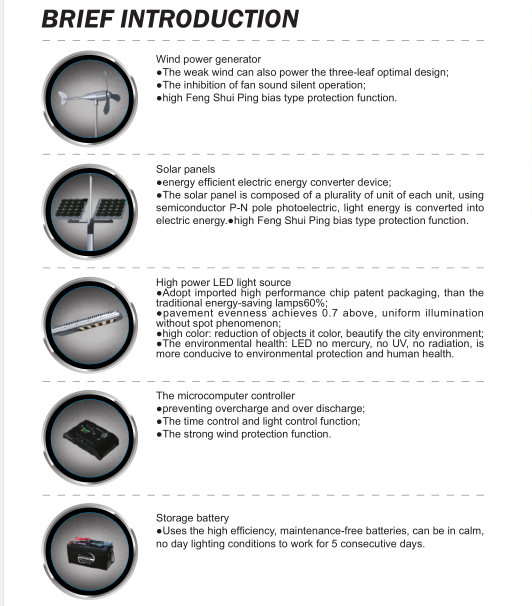Ultra-low-energy building materials ready for energy-saving home construction in the future
[Aluminium Road Network] Whether or not architects can complete the 2030 architectural challenges, or pursue their own energy-saving goals, they should fully consider limiting carbon emissions in building design to cope with the changing climate. In order to achieve these goals, there are more and more innovative materials on the market. Architects use these materials for building doors and windows for promotion. From advanced insulating foam panels to multi-layer cladding technology, a new generation of high-performance materials will help accelerate the development of building energy efficiency. Let's take a closer look at these high-performance building materials. Smart Window Combining Nanotechnology Researchers at Princeton University have shown that the smart window of the future can effectively save about 40% of energy consumption. Researchers have even developed a new intelligent window technology that can effectively control the light and heat entering the building and power itself through solar cells. This technology will be used in glass films. In addition, researchers are developing a more flexible application model that will make it more widely available. Through this technology, owners and project managers can use the mobile application to adjust the amount of light entering the room to save energy. New heights of engineered wood Prior to the use of mixed wood, tall curved beams were often used in the building. Cross-laminated timber panels (CLT) as a new type of material can achieve these design goals. Compared to traditional wood, CLT has a number of energy advantages. Its span can reach 10 feet (about 3 meters), its length is up to 40 feet (about 12 meters), and its thickness can even exceed 1 foot (about 0.3 meters). The wood fibres of this material can make the wood tougher, even to a degree greater than that of recyclable plastic. In addition, the addition of a plastic layer on the outside allows the wood to be kept longer. Studies have shown that if a tree is made into traditional wood, the use rate of this tree can only reach 63%, but the use of composite trees can be as high as 95%. Structural Insulation Boards (SIPs) The main components of structural insulation boards (SIPs) are foam and OSB, which consumes very little energy compared to other building structural systems. Construction professionals have even used SIPs as a conventional energy-saving material to further improve the insulation performance of the entire building envelope. For example, some manufacturers produce this material with Insulating Graphite Polystyrene (GPS), giving it a unique grey color and also effectively increasing the panel's R-value. In some cases, construction professionals and architects can even specify thinner panels to meet different energy consumption needs. SIPs can meet LEED Platinum certification and passive building standards. Vacuum insulation panels (VIPs) that bring immense advantages to mini homes Current trends show that many homes in the United States are becoming smaller and smaller, and vacuum insulation boards (VIPs) can effectively save space. VIPs contain a closed porous material, air is stored in these confined spaces, and then closed by pumping to vacuum. Its internal material can effectively protect this insulation panel from cracking during vacuuming. The National Research Council (NRC) of Canada had conducted a five-year monitoring and analysis of this material and concluded that such VIPs can hold approximately 80% of the heat energy for up to 30 years. The effective improvement of lighting technology Wall coverings are an important part of building performance. At the same time, building thermal bridges are also a major factor in the loss of building energy. In order to meet daytime lighting needs and energy efficiency, for example, polycarbonate panels filled with nanogels can be used in translucent walls and new multi-coated wall systems. In addition, the energy consumption for making polycarbonate panels is only a small part of the production of glass. The impact resistance of polycarbonate panels is even about 250 times more than glass, and its test withstand temperature range is -40°C to 120°C (-40° to 240°), so it can withstand many storms, snowstorms, hail, etc. And other extreme weather. Polycarbonate panels are mainly made of insulated nanogels, which are then polymerized with other materials. This panel saves about 50% of energy compared to traditional single-layer glass. New generation of energy-saving wall panels The construction of a new building requires a large amount of materials, many of which are not used at high rates, so there must be waste. The new generation of wall frame panels solves this problem very well. Compared to traditional timber frames, these wall panels can reduce wood products by approximately 40% and reduce waste by 98%. This new type of prefabricated wall consists of an external polyisocyanurate insulating board and sprayed polyurethane foam (SPF) inside the wall. Both of these materials can be installed through the jig device. Insulated panels with insulated joints also have resistance to weathering, which makes the building without additional external cladding. Green roof Many architects understand that the green roof system can reduce the loss of building rainwater, ease the pressure on the city's sewer system, and reduce the pollution of urban rivers. Is this roofing system capable of extending the service life of roofs and improving energy efficiency? The green roofing system uses a PVC waterproofing membrane that can withstand some of the UV radiation and excessive direct sunlight for the building because these high temperature factors can cause the roof to expand or contract. According to the "Architectural Design Guide," the existing green roof has been used for about 30 years. A large-scale urban green roof can effectively relieve 17,000 gallons (about 64,352 liters) of heavy precipitation, or 1819,000 gallons (about 6,885,664 liters) of regular precipitation. This rainwater can be used to irrigate plants, thereby reducing the amount of extra artificial irrigation by 50%. New 3D Printing Technology to Improve Thermal Performance Not long ago, the exterior elements of the building were completed with large 3D printing technology. Dutch researchers recently tested a conjecture using a 3D facade printing system to optimize the building's thermal performance. The system is named "Spong3D" and has a light construction quality. The researchers believe that with the different climates throughout the year, this new material incorporates a variety of functions to optimize thermal performance. Its working principle is to combine air-enclosed spaces with external thermal isolation channels to store more moving heat. Although it is still in the conceptual stage, the Spong3D system still has the possibility of implementation. More and more architects are working hard for energy-saving design. Researchers in the chemical manufacturing industry will continue to conduct in-depth research on high-performance materials.
Solar road light is a crystalline silicon solar battery power supply, valve control type sealed and maintenance-free battery, gel battery) to store electrical energy, super bright LED as light source, lamps and lanterns and controlled by the intelligent charging and discharging controller, is used to instead of the traditional public power lighting lamps.
Solar road light working principle
1. Using the microcomputer intellective controller to transfer the light energy to electrical energy.Easy to install since to wiring and trenching,energy conservation and environmental protection.
2. The microcomputer intellective controller is composed by advanced special-purpose integrated circuit,high conversion efficiency,prevent over-load and over-discharge,Output short circuit protection,extend work life,on the safe side,convenient usage.
3. High effective Non-maintaining accumulator cell,strong storage,durable usage.
4. Automatic track type time controller,Automatically adjust the working time along with different illumination time in various seasons.For extending the work time energy conservation intellective controller with automatic shut-off the light at Deep-night.
Solar Street Light ,Solar Street Light Pole,Solar Street Light Battery,Solar Street Light Advantages Jiangsu chengxu Electric Group Co., Ltd , https://www.chengxulighting.com